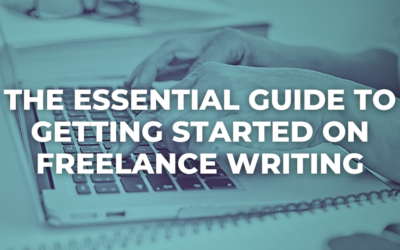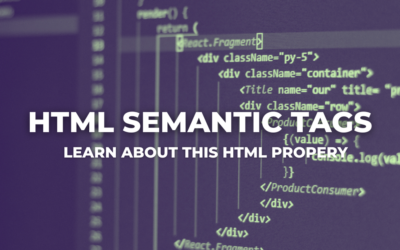 This month we bring you Jason Beaird. As well as being a contributor to unmatchedstyle from time to time in our podcasts Jason is a web designer/developer “designeloper” for Cyberwoven and author of the Sitepoint book “The Principles of Beautiful Web Design“. Jason is a regular speaker on the subject of web design and development, he is the main organizer and founder of Refreshcolumbia.org and happens to be an over-all really nice guy to be around. So we are pleased to give you some insight into how he works and what he thinks:
This month we bring you Jason Beaird. As well as being a contributor to unmatchedstyle from time to time in our podcasts Jason is a web designer/developer “designeloper” for Cyberwoven and author of the Sitepoint book “The Principles of Beautiful Web Design“. Jason is a regular speaker on the subject of web design and development, he is the main organizer and founder of Refreshcolumbia.org and happens to be an over-all really nice guy to be around. So we are pleased to give you some insight into how he works and what he thinks:
How or where do you find inspiration?
I often find myself relying on design patterns and techniques I’ve used in the past for inspiration and then trying to build something new from the same foundation. Sometimes though, that doesn’t go anywhere so I look at website galleries, photos, design magazines, etc to find new or different ideas to build from. I credit a lot of my inspiration-seeking process to Cameron Moll’s classic Sitepoint article: Good Designers Copy, Great Designers Steal I think anyone working in visual design should read that article.
Who is the biggest influence on your work right now?
Right now, I would have to say my coworkers. Even with all the blogs I read and designers I follow on Twitter, there’s something much more compelling about face-to-face design feedback and interaction. We all have different strengths too, so seeing what crazy things one of them does with a Flash element, or how far another can take Photoshop brushes really keeps me from getting complacent with my own skill set.
Where are your “design roots”? Print or Web?
Well, my design “roots” are neither print nor web really. My dad is a carpenter by trade but has always painted and created funky 3D mixed media artwork in his spare time. My mom used to be pretty big into poured ceramics too, so I spent a lot of weekends at arts and craft shows during my childhood. That’s really where my love of art and design began. Ever since the day my family got a hand-me-down Apple IIe though, I’ve been fascinated by computers and technology. In college I majored in Graphic Design, but dual-majored in Digital Media. I did a few print design projects when I was fresh out of school, but I prefer to work on the web.
How important is it to know the history of design?
If you go to school for Graphic Design, you will inevitably get a heavy dose of art and design history. During the first couple years of college I remember hating my art history classes because they were all memorization. Looking back on those classes now though, I see that being exposed to a wide range of “Art Through The Ages” really gave me a broader understanding of visual design. I’m sure I’ve lost a lot of the date/title/artist details over the years, but that visual library I built up by studying the history of art and design still plays a role in my process today.
Serif or Sans?
Slab-serifs. 🙂 Actually it all just depends on the situation. Choosing between serif or sans on a website really should depend on the character you are trying to evoke with your design. Next time you’re at a magazine stand, take a look at the mastheads. Usually, the typeface used for the title is chosen to reflect the character of the magazine itself. That’s what you’re going for.
Do you code and design? Are you a “Hybrid”?
I consider myself to be more of a designer, but I always end up drifting back into the code end of the development pool. I feel very comfortable translating design into front-end code and actually enjoy tinkering with back-end development from time to time. One of the programmers I work with refers to me as the Varmaster, mostly because I end up messing with stuff that I probably shouldn’t.
What’s your favorite part of the creative process?
I don’t know if most people would still consider this part of the creative process when it comes to web design, but I enjoy seeing the functioning HTML build. Basking in the completeness of a Photoshop comp is rewarding, but interacting and navigating with that design is what the web is all about.
What makes your creative process different from everybody else?
Not sure, really. In general, I’m very task oriented. I tend to focus on each individual piece of the puzzle as I go along rather than keeping my eye on the big picture. Most people will tell you that will lead to disaster, but I work better that way for some reason.
What do you see as the single biggest shift in the evolution of design over the past 5 years?
The single biggest shift, in my opinion, has been the attention to grids and typography. We’re still a long way off from what print designers have been doing for decades now, but brilliant people like Mark Boulton and Khoi Vinh have really made a huge impact on our industry by bringing grid based design to the web.
What’s the difference between User Experience and User Interface design?
A simple, list-based website navigation is a user interface, as is a joystick on an arcade game. While a method of interaction might seem straightforward, it might not be all that intuitive for the user. User experience is the optimization of user interfaces to resolve those issues and make them more efficient.
What makes one a web design professional?
Building a website for a friend’s band or an uncle’s drywall company doesn’t make someone a professional. Having formal training and designing websites like it’s 2002 doesn’t cut it either. In order to call yourself a web design professional, you really need a foundational knowledge, a few years of experience and a desire to keep learning. This industry never stops changing.
What are designers/developers doing right (or wrong) in the web 2.0 world?
There has been a lot of talk about looking for inspiration outside the web. Some designers have started to incorporate new textures, vintage typefaces, and unique imagery into their work that transforms the mundane and pushes web design to new levels. Unfortunately, most of the web – even a lot of current stuff – is really bland. The biggest thing we can do wrong is to keep designing introspectively. We need to keep innovating.
What’s your favorite flavor of design or development programs/languages?
For visual design work, I’m very much a Photoshop guy. I spend a lot more of my time writing and editing code lately though and for that I use Textmate. I do use Dreamweaver occasionally, mainly for it’s .NET auto-completes on evil things like datagrids, though I imagine Textmate could probably do that for me too.
What is your favorite book?
I recommend Curt Cloninger’s original “Fresh Styles for Web Designers” more now than when I first bought it in 2001. I think the reason I like that book so much is because it has become sort of a time capsule for indie web design. None of the examples from his book would fly today, but they’re all beautiful in their own context.
What is your favorite movie?
Nacho Libre. Ebert was wrong. It was hilarious.
Who is your favorite musical artist (or What musical artist are you listening to the most right now?)
I like variety. There’s definitely some music I don’t like, but my playlist includes everything from Jimmy Buffet to Outkast and Modest Mouse to Kenny Chesney. I guess that’s what I take away from being a child of the Napster generation.
We’ll close out the interview with a description of Jason in his own words (be sure to check him out online at jasongraphix.com):
Hi there. I’m a front-end developer at Cyberwoven in Columbia, SC. “Developer? But didn’t you write a design book?” I try not to ask myself questions all that often (because eventually people start to look at me kinda funny) but I still ask myself that one now and then. Although I do identify myself as more design than developer, I enjoy the challenges of tinkering with code just as much as pushing pixels in Photoshop. In short, I <3 the web and all the little bits and bytes that go into making it fly.




Nice interview…